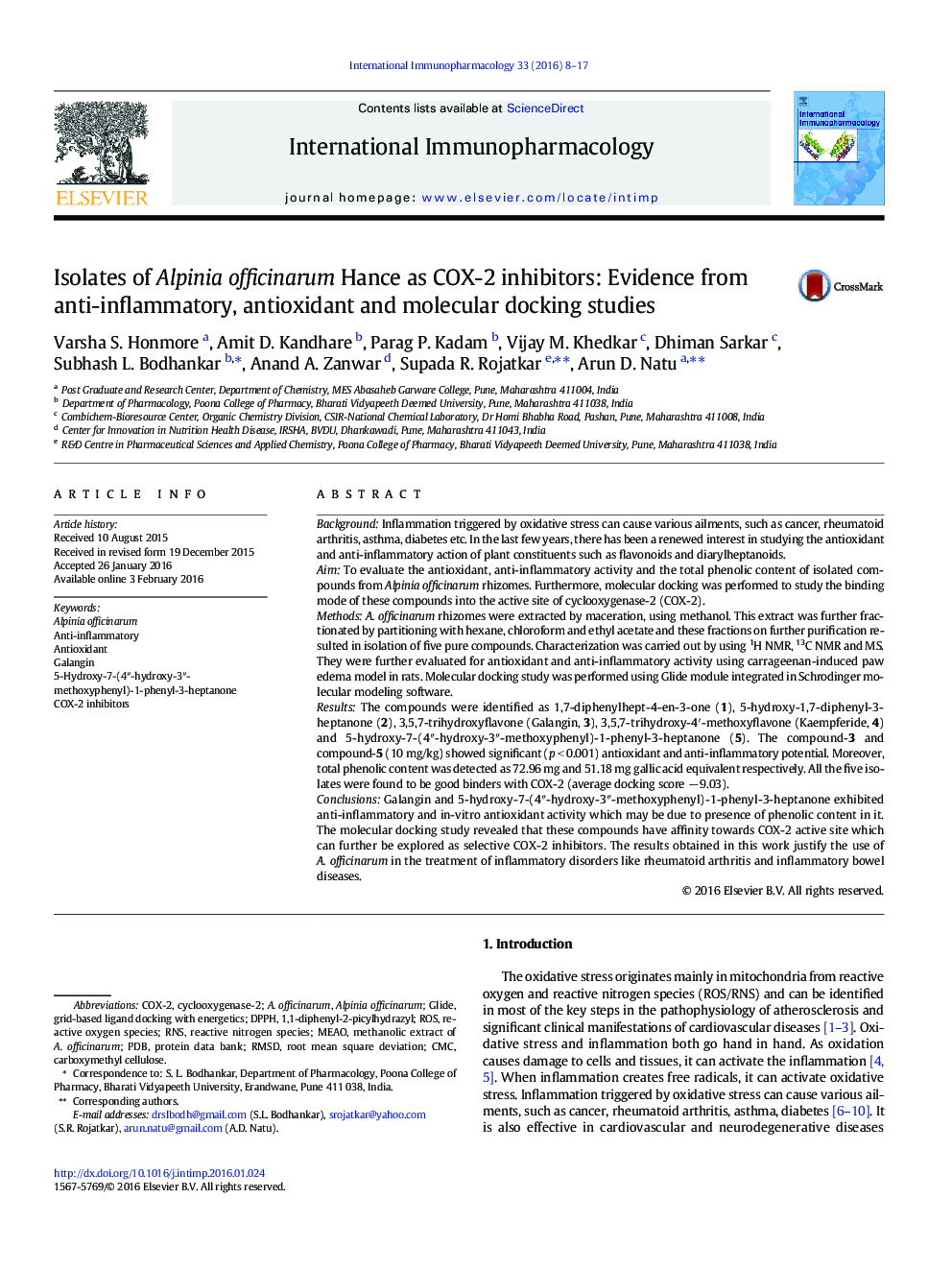| کد مقاله | کد نشریه | سال انتشار | مقاله انگلیسی | نسخه تمام متن |
|---|---|---|---|---|
| 2540237 | 1559757 | 2016 | 10 صفحه PDF | دانلود رایگان |

• Five pure compounds were isolated from methanol extract of Alpinia officinarum rhizomes.
• Characterization of compounds was carried out by using 1H NMR, 13C NMR and MS.
• They showed significant antioxidant and anti-inflammatory potential.
• In molecular docking they exhibited good binding with COX-2 (avg. docking score − 9.03).
• Most active compounds were Galangin and 5-HPH.
BackgroundInflammation triggered by oxidative stress can cause various ailments, such as cancer, rheumatoid arthritis, asthma, diabetes etc. In the last few years, there has been a renewed interest in studying the antioxidant and anti-inflammatory action of plant constituents such as flavonoids and diarylheptanoids.AimTo evaluate the antioxidant, anti-inflammatory activity and the total phenolic content of isolated compounds from Alpinia officinarum rhizomes. Furthermore, molecular docking was performed to study the binding mode of these compounds into the active site of cyclooxygenase-2 (COX-2).MethodsA. officinarum rhizomes were extracted by maceration, using methanol. This extract was further fractionated by partitioning with hexane, chloroform and ethyl acetate and these fractions on further purification resulted in isolation of five pure compounds. Characterization was carried out by using 1H NMR, 13C NMR and MS. They were further evaluated for antioxidant and anti-inflammatory activity using carrageenan-induced paw edema model in rats. Molecular docking study was performed using Glide module integrated in Schrodinger molecular modeling software.ResultsThe compounds were identified as 1,7-diphenylhept-4-en-3-one (1), 5-hydroxy-1,7-diphenyl-3-heptanone (2), 3,5,7-trihydroxyflavone (Galangin, 3), 3,5,7-trihydroxy-4′-methoxyflavone (Kaempferide, 4) and 5-hydroxy-7-(4″-hydroxy-3″-methoxyphenyl)-1-phenyl-3-heptanone (5). The compound-3 and compound-5 (10 mg/kg) showed significant (p < 0.001) antioxidant and anti-inflammatory potential. Moreover, total phenolic content was detected as 72.96 mg and 51.18 mg gallic acid equivalent respectively. All the five isolates were found to be good binders with COX-2 (average docking score − 9.03).ConclusionsGalangin and 5-hydroxy-7-(4″-hydroxy-3″-methoxyphenyl)-1-phenyl-3-heptanone exhibited anti-inflammatory and in-vitro antioxidant activity which may be due to presence of phenolic content in it. The molecular docking study revealed that these compounds have affinity towards COX-2 active site which can further be explored as selective COX-2 inhibitors. The results obtained in this work justify the use of A. officinarum in the treatment of inflammatory disorders like rheumatoid arthritis and inflammatory bowel diseases.
Journal: International Immunopharmacology - Volume 33, April 2016, Pages 8–17